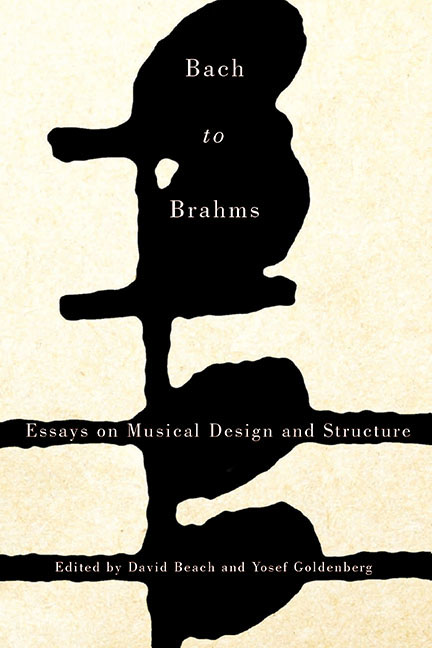Book contents
- Frontmatter
- Dedication
- Contents
- Introduction
- Part One Structure and Design
- Part Two Focus on Motive
- 5 Chopin as an Interpreter of Mozart: The Variations Opus 2 and Don Giovanni
- 6 The First Movement of Brahms's Fourth Symphony Revisited: A Study of the Fanfare and the “Cloud of Mystery”
- 7 “Capricious Play”: Veiled Cyclic Relations in Brahms's Ballades Op. 10 and Fantasies Op. 116
- 8 Chopin's Study in Syncopation
- 9 A Sharp Practice, A Natural Alternative: The Transition into the Recapitulation in the First Movement of Beethoven's “Hammerklavier” Sonata
- 10 Ernst Oster's Vision of Hidden Repetitions and Motivic Enlargements in J. S. Bach's Short Keyboard Works
- Part Three Structure and Design II
- List of Contributors
- Index
8 - Chopin's Study in Syncopation
from Part Two - Focus on Motive
Published online by Cambridge University Press: 14 March 2018
- Frontmatter
- Dedication
- Contents
- Introduction
- Part One Structure and Design
- Part Two Focus on Motive
- 5 Chopin as an Interpreter of Mozart: The Variations Opus 2 and Don Giovanni
- 6 The First Movement of Brahms's Fourth Symphony Revisited: A Study of the Fanfare and the “Cloud of Mystery”
- 7 “Capricious Play”: Veiled Cyclic Relations in Brahms's Ballades Op. 10 and Fantasies Op. 116
- 8 Chopin's Study in Syncopation
- 9 A Sharp Practice, A Natural Alternative: The Transition into the Recapitulation in the First Movement of Beethoven's “Hammerklavier” Sonata
- 10 Ernst Oster's Vision of Hidden Repetitions and Motivic Enlargements in J. S. Bach's Short Keyboard Works
- Part Three Structure and Design II
- List of Contributors
- Index
Summary
This essay focuses on one of Chopin's most enigmatic pieces—the Etude in E Major, op. 10, no. 3—and it describes my efforts to come to terms with the compositional problems that I once perceived in it. To be precise: when I first analyzed the score, I discovered a structure that appeared to lack coherence, and this reinforced my sense that many performances of the work fail to hang together. My doubts about the music's coherence seemed hard to justify, not least because the Etude is generally regarded as one of Chopin's masterpieces. I therefore began to seek alternative ways of understanding the music, a process lasting many years.
The work has a simple tripartite form, shown in figure 8.1, with an initial A section giving rise to a longer B section, followed by a varied reprise of the opening. The expressive innocence of the main theme in section A is eventually overshadowed by an eruption in the middle of the Etude that seems almost uncontainable, so great are its tensions. But these are gradually defused in a transitional passage leading to the return of the opening theme, and the coda at the end of the piece similarly dissipates lingering tensions from local and global climax points.
Jim Samson has observed that the second section of the ABAʹ form is exactly twice as long as the first—82 versus 41 quarter-note beats—and that the central climax comes at a point proportionally equivalent to the smaller-scale one in the first A section, after 66 beats versus 33, with the sixteen-beat transitional passage that I have referred to corresponding in length and, to some extent, in function to section A's last four measures (that is, eight beats; see fig. 8.2). These intriguing relationships are not typical of Chopin, who was no mathematician when it came to the durations and effects of his musical forms; nevertheless, in the Etude, he used a strongly proportioned framework as one of the ways to shape the music into a single broad gesture, the performance implications of which will be drawn out later.
- Type
- Chapter
- Information
- Bach to BrahmsEssays on Musical Design and Structure, pp. 132 - 142Publisher: Boydell & BrewerPrint publication year: 2015

